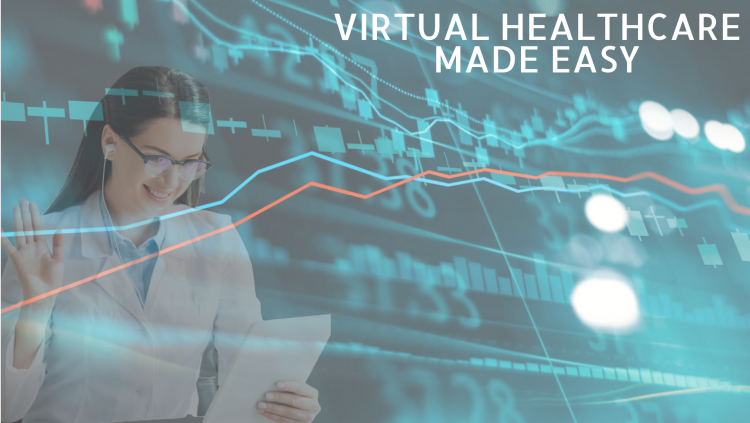Telemedicine: Revolutionizing Healthcare, One Click at a Time
In today’s fast-paced, tech-driven world, telemedicine is reshaping how we access healthcare. Gone are the days of waiting for hours in a clinic or traveling miles to see a specialist. With just a smartphone, tablet, or computer, patients can now consult doctors from the comfort of their homes. This innovation is not just about convenience; it’s about redefining healthcare access and delivery. Let’s explore what telemedicine is, how it works, and why it’s fast becoming an essential part of modern healthcare.
What is Telemedicine?
Telemedicine refers to the use of digital communication technologies, like video calls, phone consultations, and mobile apps, to provide healthcare services remotely. It allows doctors and patients to connect in real-time for a wide range of medical needs—diagnosis, treatment, follow-ups, and even preventive care. Whether you’re managing a chronic condition or seeking advice for a minor ailment, telemedicine brings healthcare to your fingertips.
How Does Telemedicine Work?
The process is straightforward and designed for ease of use. Here’s how it typically works:
1.Book an Appointment
Patients can schedule a virtual consultation through a hospital’s website, a mobile app, or a telemedicine service platform. Most systems allow you to select your preferred time and type of consultation.
2. Join the Session
Using a secure platform, patients log in to connect with their healthcare provider. During the session, you can describe symptoms, share medical history, or even upload reports and test results for review.
3.Receive Care
The doctor provides a diagnosis, prescribes medications, or offers medical advice based on your concerns. Prescriptions are often sent directly to your pharmacy or delivered electronically.
This streamlined approach ensures that quality care is just a click away, minimizing the need for unnecessary trips to the clinic.
Benefits of Telemedicine
Telemedicine isn’t just convenient, it’s transformative. Here are some of its key benefits:
1. Convenience and Accessibility
•For Rural Areas: Telemedicine bridges the gap for people in remote regions, offering access to specialists and advanced medical care without the need for long-distance travel.
•For Busy Lifestyles: It accommodates hectic schedules, allowing patients to consult doctors during breaks, evenings, or weekends.
2. Cost-Effective
•Eliminates costs associated with travel, parking, and time off work.
•Many telemedicine providers offer subscription plans or pay-as-you-go options, making it more affordable than traditional visits.
3. Improved Continuity of Care
•Regular check-ins for chronic diseases, such as diabetes or hypertension, ensure better management.
•Digital records streamline tracking health progress and accessing past prescriptions or test results.
4. Safe and Hygienic
•Reduces exposure to contagious illnesses in crowded waiting rooms—a crucial advantage during flu seasons or pandemics like COVID-19.
Challenges of Telemedicine
Despite its advantages, telemedicine has limitations that need addressing:
•Technology Barriers: Not everyone has access to high-speed internet or the necessary smart devices. This digital divide can leave vulnerable populations behind.
•Digital Literacy: Older adults or those unfamiliar with technology may find telemedicine platforms challenging to use.
•Privacy Concerns: Protecting patient data and maintaining confidentiality are critical.
Healthcare providers must invest in secure platforms and adhere to strict data protection regulations.
Telemedicine in Action: Real-Life Scenarios
Telemedicine is versatile and applicable across a variety of healthcare needs. Here are some real-life scenarios where it shines:
1. Chronic Disease Management
Patients with conditions like asthma, arthritis, or heart disease can schedule regular virtual check-ups to adjust medications and monitor symptoms without the hassle of frequent clinic visits.
2. Mental Health Support
Teletherapy platforms connect individuals with licensed therapists, offering a safe space to address anxiety, depression, or other mental health challenges. This has been a game-changer, especially in reducing stigma and increasing accessibility.
3. Post-Surgery Follow-Ups
Instead of traveling to a hospital, patients recovering from surgeries can consult their doctors via video calls to discuss progress, address concerns, and receive advice.
4. Emergency Care Guidance
For non-life-threatening emergencies, telemedicine provides immediate advice on whether symptoms warrant a trip to the ER or can be managed at home.
The Future of Telemedicine
Telemedicine is not just a stopgap solution, it’s the future of healthcare. Here’s what’s on the horizon:
•AI and Machine Learning: Advanced diagnostic tools powered by artificial intelligence can assist doctors in identifying illnesses faster and more accurately.
•Wearable Technology: Devices like smartwatches and fitness trackers will seamlessly integrate with telemedicine platforms, offering real-time health data to doctors.
•Global Consultations: Cross-border telemedicine will allow patients to seek expert opinions from top specialists anywhere in the world.
•Personalized Medicine: With the integration of genetic data and patient history, telemedicine will deliver tailored treatments that suit individual needs.
Telemedicine is ideal for:
•Non-urgent medical issues like rashes, infections, or mild allergies.
•Follow-up consultations for chronic diseases or after surgeries.
•Mental health counseling, including therapy sessions or stress management.
However, it’s important to note that telemedicine isn’t suitable for emergencies like chest pain, severe injuries, or situations requiring immediate physical intervention. In such cases, in-person care remains indispensable. Telemedicine is more than a convenience, it’s a revolution in healthcare. By breaking down barriers of distance, time, and cost, it empowers patients to take charge of their health while ensuring access to quality care. As technology continues to evolve, telemedicine is poised to become an even more integral part of our lives, blending innovation with compassion to create a truly patient-centered healthcare experience.

